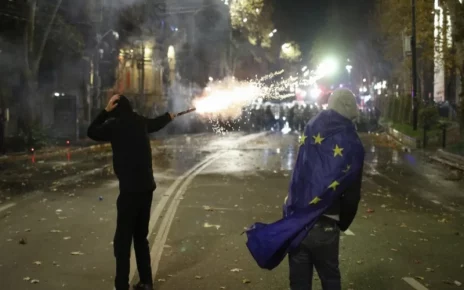Changes in Hong Kong’s public education landscape inherently reflect broader social and political transitions within the region. Carrie Lam, the CEO of Hong Kong, recently announced in her 2020 Policy Address sweeping changes to the Liberal Studies course, raising questions not only around the motivations for such a reform but the implications of its review. The restructuring includes explicit limitations on course content, shifts in grading mechanisms, and increased government oversight on the core curriculum. Fundamentally, these proposed changes undermine the initial course objectives and the cultivation of independent “critical thinking” skills of secondary school students in Hong Kong.
The Liberal Studies course, introduced in 2003 and mandated as compulsory in 2009, has been a topic of incessant debate in Hong Kong. Critically different from the other three core subjects of Maths, English, and Chinese, the Liberal Studies curriculum promotes an interdisciplinary teaching tradition aimed at fostering independent thinking and “responsible citizens with a sense of global and national identity.” As Chang argues, this course was intended to encourage civic understanding and participation among youths in Hong Kong. In doing so, the course’s primary objective was to improve problem-solving skills and strike a balance with the teacher-centred orientation of public education. As Spires contends, this critical and active engagement with contemporary social issues was integral to the development of a democratic society.
In response to this debate, a task force was established, composed of teachers, professors and school principals aimed at developing a critical review of the course and providing policy recommendations to the Education Bureau. Released in September of this year, the three-year review’s changes include the maintenance of the mandatory status of the course, as well as the current seven-point grading system. Despite adopting “most of the suggestions,” the Education Bureau contravened key recommendations, declaring, for example, a change to the pass/fail grading system of the course. Further, the Bureau mandated that a previous voluntary vetting program of curriculum textbooks would become compulsory. In doing so, textbooks and curriculums are now to be scrutinized by the government, placing more emphasis on contents relating to the “constitution” and rule of law.
As a result, the previous agency experienced by teachers in designing the curriculum has been severely undercut. Explicit editorial changes have already been realized: references to “separation of power” have been omitted whilst depictions of pro-democracy slogans have been altered. Despite claims that this move is meant to re-align critical thinking, it is explicitly conceived of as “political censorship.” Coupled with the added curricula measure of having to visit China, these educational shifts identify a forced reorientation towards Mainland China with less focus being placed on current affairs. This serves to slash the undergirding objective of developing independent and analytical students.
Carrie Lam’s Fourth Policy Address held on November 29thclarified the amendment justifications, highlighting the necessity of the adjustments as a means to correct “deviations” from the core intentions of the course. Lam noted that the course had developed “misguided critical thinking” which advocated objecting to everything about the government and Basic Law. In theory, the reform measures purported to focus on developing students’ ability to discern facts, such as Hong Kong being an “inseparable part of China.”
Along the same vein, many pro-establishment government figures have condemned the course for “radicalizing” youth and breeding a generation of scholars “fundamentally opposed to the CCP.” Tung Chee-hwa, the CEO at the time of the course’s promulgation, proclaimed the course a “failure” earlier this year, citing deviation from its original objectives and for “escalating violence” among young people. Despite lawmakers consistently denying allegations that the move was politically motivated, as Ip Kin-yuen argues, this discourse critically serves to highlight that liberal studies became a “scapegoat” on which the government was able to blame social unrest and divert responsibility for its “misadministration” during recent protests. This contention becomes evident when noticing the priorities of the new curriculum. Focused on developing a strong understanding of “national development,” course content places more emphasis on Mainland China and less on current affairs, aiming to deepen a “sense of belonging to the motherland.” This shift explicitly denotes a political bias in promoting the new curriculum, one grounded in a desire to deepen reform and pursue a more harmonious society as identified in Xi’s Four Comprehensives.
Despite denying such claims, the government’s motivation for the changes remains rooted in the idea that such an introduction would instill “positive values” into students. In doing so, this claim serves to counterintuitively reinforce assertions that such reforms are politically motivated. Under the need to comprehensively deepen reform and govern according to law, values of “law-abidingness” take primacy. These feed directly into Xi’s Four Comprehensives and into a government agenda that prioritizes state sovereignty above autonomy. With this proclamation, the integrity of the reform measures is undermined as key instances of suppression and misleading narratives within the government as a means to quell public discontent are identified. Critically, the mechanisms by which such a proposal should have been discussed were skirted completely. As John Tan Kang examines, the consultation by the Education Bureau revealed an opacity in the decision-making review and adoption of the taskforce’s recommendations, leaving the “Curriculum Development Council” caught completely off guard. As Kang concludes, the consultation proceedings were not done through proper mechanisms and went “against procedural justice.”
Such a curtailing of proper procedure and misleading political discourse is evidenced by two key empirical studies. Firstly, a recent poll by the Professional Teachers’ Union identified that over 90% of a sample group comprised of 502 Liberal Studies teachers said they believed that the sweeping reform was politically motivated, with 92% believing that the move was a form of suppression in which politics overrode educational interests. Secondly, a report published by the Chinese University of Hong Kong on civic values amongst younger generations found that the course itself had a “limited influence” on values and participation in pro-democracy movements. With this study, it becomes explicitly evident that the “failure” of the course being grounded in radicalized youth is completely unfounded. Such remarks serve to misinform the public on the matter and polarize politics in Hong Kong. In doing so, these two studies showcase not only the misinformation inherent within the recent educational policy reforms of the Hong Kong government but further demonstrate the faulty premises on which these reforms are predicated.
The implications of such changes are grave not only for the students themselves but for the region as a whole. Critically, the reforms in liberal studies to be enacted next year severely undermine independent and analytical thinking among a new generation of students. Cited as the core course in which to develop such skills, with a de-emphasizing of this course’s importance (through reduced hours for instance) and a shift to the pass/fail grading framework, students are no longer incentivized to hone decision-making and analytical skills. Guided along a single, government-approved curriculum thoroughly vetted by the Education Bureau, the aim of improving students’ critical thinking skills in a “comprehensive way is gone.”
Content is restricted and controversial topics are omitted. Not only does this connote a sense of misinformation in terms of explicit censorship, but the discouraging of engagement with contentious topics further limits the agency of students to openly discuss and interact with material of contemporary political importance. Critically, this delineates a limitation on fundamental freedoms of expression and political participation guaranteed under Article 2 of the Basic Law of Hong Kong. Instantiating a greater level of oversight by the government and need to quell radicalization, this move explicitly identifies a desire to dissuade students from social participation, void of any “counter-arguments” or alternate perspectives, erasing the foundational principles of education.
These measures don’t just affect students but teachers too. Viewed in tandem with the National Security Law passed in June, teachers are increasingly “pressurized” to devise curriculums that conform to the government’s mandate and advocate for a “pro-government” view. As Kevin Yeung (Secretary for Education) proclaimed earlier this month, classroom inspections would be increased as a means to monitor the teaching of revamped courses. This tension came to the forefront in September of this year when a primary school teacher was disqualified from her position for devising a lesson plan for fifth-grade students in which advocacy for Hong Kong independence was identified. Such moves are classified by the government as motivating students to join the pro-democracy cause and “smear” the country. This instance serves as a primary example of the implications of educational reform – not only on the autonomy of students and teachers, but also on the development of independent thinking that may run contrary to the party line. Disinformation is inherent in these reforms, as greater control and material censorship seeks to eliminate any agency in instruction and provide a mandated party line of pre-approved, non-controversial topics that must be followed.
Taken in isolation such reforms may not seem so radical. Some may sympathise with the assertion that such a move is initiated out of “educational principle issues.” With a three-year review being conducted by an established taskforce, credence can be given to the comprehensiveness of such recommendations. On the other hand, the mandated supervision by the government and non-alignment by the Education Bureau on such changes severely undercut this.
Furthermore, when viewed within the larger political landscape, as Spires notes, these reform measures fundamentally reflect greater political schisms and social tensions within the region. The promulgation of the Liberal Studies curriculum in 2003 was distinctly positioned to promote “democratic ideals in Hong Kong,” and served consequently as a symbol of aggregate challenges to mainland authority. The reform measures and policy motivations highlight a crucial tension between Beijing’s desire for education to act as a mechanism to increase national uniformity, contrary to Hong Kong’s desire for greater autonomy. In doing so, the reform measures indicate a “new start” as Kevin Yeung claims, one which necessarily deviates from the previous ill-connotations associated with the concept of liberal ideas and values.
This break from the past is reminiscent of the Chinese concept of shi or overall trend, a concept showcasing that a development is increasingly gaining momentum. Consequently, primacy is increasingly recognized in the “one country” notion, overriding a previous political equilibrium between the “two systems” principle. Viewed in this light, this educational reform is simply one instance in a larger categorical shift in relations between Hong Kong and China. The consequences of this shift for the long-term prosperity of Hong Kong’s academic institutions should not be underestimated.
Cover photo: Carrie Lam, current Chief Executive of Hong Kong (2016), by VOA via Wikimedia Commons. Public Domain.
Disclaimer: Any views or opinions expressed in articles are solely those of the authors and do not necessarily represent the views of the NATO Association of Canada.




